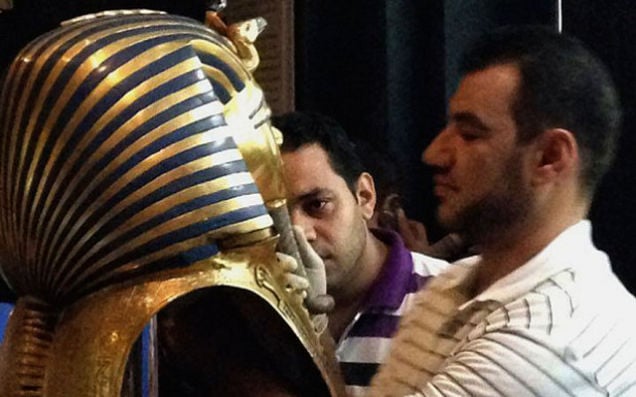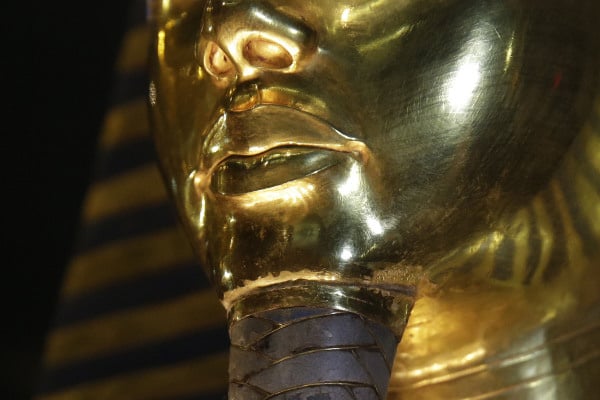Art & Exhibitions
King Tut Restorer Transferred, Mask Can Be Fixed
The head of restoration gets his just desserts.

The head of restoration gets his just desserts.

Sarah Cascone

Following an ill-advised repair job that saw King Tut’s beard glued on with epoxy, Cairo’s Egyptian Museum has transferred its head of restoration, lham Abdel Rahman, to the Royal Coaches Museum in Bulaq. Rahman will be replaced temporarily by Coptic Museum head of restoration Saeed Abdel Hamid.
The botched restoration was carried out after the beard was knocked off the 3,300-year-old funerary mask as workers attempted to change a light bulb in Tut’s display case in August (not, as previously reported, during an October cleaning).
Fortunately, it would appear that the damage caused by the rushed repairs—apparently carried out during museum hours inside the gallery—can be fixed.
As reported by Ahram Online, German restoration specialist Christian Eckmann told reporters at a Cairo news conference that he had inspected the sculpture and that “there is no actual endangering of the mask. The measures that have been taken are reversible.” The world breathed a collective sigh of relief—if they can create a perfect replica of the boy king’s entire tomb, they better be able to wash some glue off his face.

The glued-back-on beard of King Tut seen at the Egyptian Museum, Cairo, on January 24, 2015. Photo: AP.
According to Eckmann, the beard broke off “due to the glue used during the first restoration of the mask in 1941,” when the beard was reattached to Tut’s chin. He acknowledged that while restorers sometimes us epoxy, it “is not the best solution” and had been “applied improperly” on the boy king’s mask. Eckmann assured reporters that “there will be a committee of experts consisting of conservators, archeologists and natural scientists in order to develop a plan for re-conservation.”
Egypt’s antiquities head Mamdouh Eldamaty, who called the press conference, downplayed the incident, asserting that the widely circulated photo showing scratches on the mask had been Photoshopped to exaggerate the damage. “Tutankhamun’s mask is safe and sound, and this brouhaha created is unjustified, and it has a negative impact on Egypt’s reputation for keenness on preserving and conserving its heritage, as well as on tourists who are coming to Egypt,” he said.